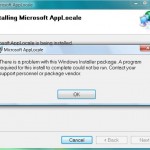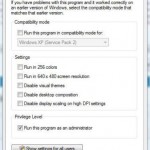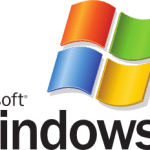When user launches AppLocale, it prompts user for an executable to run, then detects the language ANSI codepage of the legacy application for Windows to emulate. If detection is incorrect, users can change to correct language code-page. Extra option is ability to create a shortcut which able to launch AppLocale and the application on selected codepage directly.
As illustrated above, there is only one code-page can be selected within AppLocale interface. What if the legacy application you want to run or play has more than one language to display? Such as in Winamp, iTunes or other music players where music or song playlists can contains song titles, albums and other meta information from various language encoding. One typical and common example is music collection that consists of English, Chinese, Korean and Japanese songs. If only one ANSI codepage for a language is selected, likely the text of other languages appear garbled.
The solution or workaround for multiple languages display issue where multiple ANSI codepages conversion needs to be support is a trick to run and launch AppLocale with all required languages’ codepages supported. The multiple codepages AppLocale is likely able to display all languages properly.
Follow these steps for running AppLocale with many languages’ codepages environment:
- Run AppLocale, select the legacy program that you want to perform this hack on, and ensure that one of the wanted code-page is selected.
- When asked if want to create a shortcut to always run this application with AppLocale, tick the checkbox, and put in appropriate description for the link, such as in the format of “Application Name (Language)”, and finish the wizard process.
- The shortcut will be place in the Microsoft AppLocale folder in the Start Menu. This shortcut is important as the target link properties allow us to get the the corresponding switch for the language selected.
To get the value of this switch, right click on the shortcut created, then selected Properties.
- The Properties window of the shortcut will open. Check a text box that named as Target. It should contain string looks like below:
C:\WINDOWS\AppPatch\AppLoc.exe “C:\Program Files\Winamp\winamp.exe” “/L0411”
Note the red highlighted section. “/L0411” is the switch code of AppLocale that simulates Japanese encoding environment. Depending the language selected, this switch will be different for all languages able to be simulated by AppLocale.
Remember this code, and this code will be added to the final AppLocale shortcut for it to support more languages.
- Repeat the wizard process for all the languages you needed for the program. You just need to keep a shortcut, while the rest of the shortcuts can be deleted after note down the code in the red part above.
- Once you have finished the shortcuts creation for all languages wanted, you should have all switch codes for AppLocale matched with all languages needed to support.
Append all code to the end of Target text box on a AppLocale shortcut to the program as switches or extensions to the command, so that the target command will look like below:
C:\WINDOWS\AppPatch\AppLoc.exe "C:\Program Files\Winamp\winamp.exe" "/L0404" "/L0804" "/L0411" "/L0412"
In the example above, 4 popular East Asian languages are supported. The switch codes represents the following languages:
“/L0404” = Traditional Chinese
“/L0804” = Simplified Chinese
“/L0411” = Japanese
“/L0412” = Korean - AppLocale will now able to support and emulate more languages in one instance.







